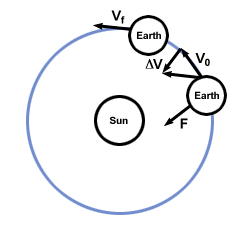Please wait while we process your payment
If you don't see it, please check your spam folder. Sometimes it can end up there.
If you don't see it, please check your spam folder. Sometimes it can end up there.
Please wait while we process your payment

By signing up you agree to our terms and privacy policy.
Don’t have an account? Subscribe now
Create Your Account
Sign up for your FREE 7-day trial
By signing up you agree to our terms and privacy policy.
Already have an account? Log in
Your Email
Choose Your Plan
Individual
Group Discount
Save over 50% with a SparkNotes PLUS Annual Plan!
 payment page
payment page
Purchasing SparkNotes PLUS for a group?
Get Annual Plans at a discount when you buy 2 or more!
Price
$24.99 $18.74 /subscription + tax
Subtotal $37.48 + tax
Save 25% on 2-49 accounts
Save 30% on 50-99 accounts
Want 100 or more? Contact us for a customized plan.
 payment page
payment page
Your Plan
Payment Details
Payment Summary
SparkNotes Plus
You'll be billed after your free trial ends.
7-Day Free Trial
Not Applicable
Renews July 21, 2025 July 14, 2025
Discounts (applied to next billing)
DUE NOW
US $0.00
SNPLUSROCKS20 | 20% Discount
This is not a valid promo code.
Discount Code (one code per order)
SparkNotes PLUS Annual Plan - Group Discount
Qty: 00
SparkNotes Plus subscription is $4.99/month or $24.99/year as selected above. The free trial period is the first 7 days of your subscription. TO CANCEL YOUR SUBSCRIPTION AND AVOID BEING CHARGED, YOU MUST CANCEL BEFORE THE END OF THE FREE TRIAL PERIOD. You may cancel your subscription on your Subscription and Billing page or contact Customer Support at custserv@bn.com. Your subscription will continue automatically once the free trial period is over. Free trial is available to new customers only.
Choose Your Plan
This site is protected by reCAPTCHA and the Google Privacy Policy and Terms of Service apply.
For the next 7 days, you'll have access to awesome PLUS stuff like AP English test prep, No Fear Shakespeare translations and audio, a note-taking tool, personalized dashboard, & much more!
You’ve successfully purchased a group discount. Your group members can use the joining link below to redeem their group membership. You'll also receive an email with the link.
Members will be prompted to log in or create an account to redeem their group membership.
Thanks for creating a SparkNotes account! Continue to start your free trial.
We're sorry, we could not create your account. SparkNotes PLUS is not available in your country. See what countries we’re in.
There was an error creating your account. Please check your payment details and try again.
Please wait while we process your payment

Your PLUS subscription has expired
Please wait while we process your payment
Please wait while we process your payment

Problems 1
Problem : Magnetic forces are often at least as powerful as gravitational forces. Consider a 5 kg piece of iron suspended in mid-air by a powerful magnet above the piece of iron. How much force does the magnet exert on the iron?
The iron does not move, implying a constant velocity (v = 0). Thus, by Newton's First Law, the sum of the forces on the iron must be zero. In this case, there are two forces acting upon the iron: the gravitational force of the earth, and the magnetic force of the magnet. Thus FG + GM = 0. We can calculate the gravitational force using the fact that the gravitational acceleration on earth is 9.8 m/s2: FG = ma = (5 kg)(9.8 m/s2) = 49 N, directed downward. the magnet must exert a force of 49 N in the upward direction.Problem :
The earth rotates around the sun with a constant speed. Is the earth an inertial reference frame?
At first glance, the earth seems to be an inertial reference frame, as it
retains constant speed. However, it does not retain constant velocity.
Recall that velocity is a vector while speed is a scalar. Though the magnitude
of the velocity remains constant, the direction changes. In fact, when we
calculate the change in velocity through vector addition we see that Δv
points in the exact direction of the gravitational force exerted on the earth by
the sun, as expected by Newton's Second Law:

Please wait while we process your payment

